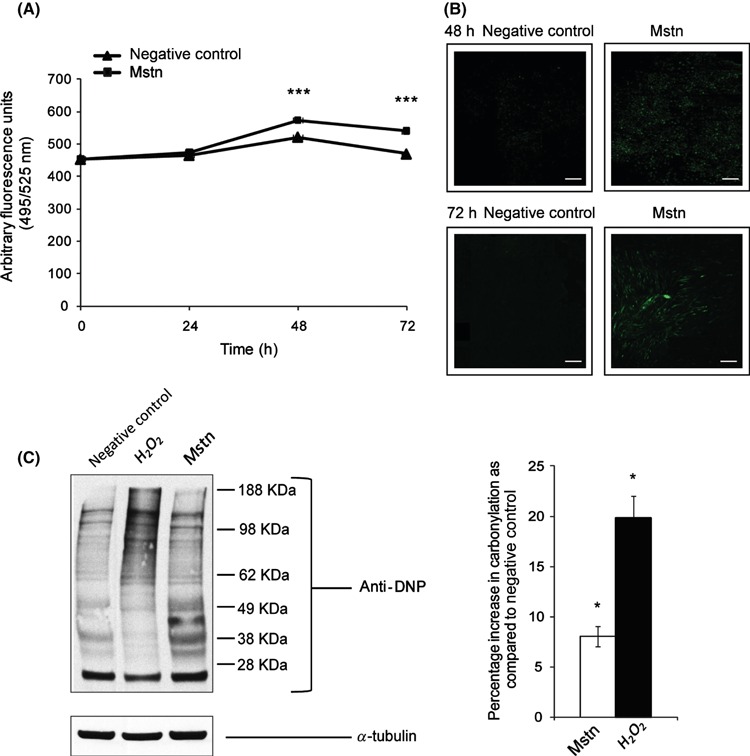Figure 1.

Myostatin (Mstn) induces reactive oxygen species (ROS) in C2C12 myoblasts. (A) ROS production was measured using a fluorescent multilabel plate reader in differentiating C2C12 cells treated with Mstn (3.5 ng mL−1) using a fluorescent probe, CM‐H2DCFDA (Molecular Probes). The graph shows relative intensities expressed as arbitrary fluorescent units. ROS production is significantly increased (***P < 0.001) upon Mstn treatment during differentiation when compared to the untreated cells (n = 4). (B) ROS production was also measured in Mstn‐treated C2C12 cells in Permanox chamber slides. The fluorescence was viewed under the Leica upright microscope, and images were taken at 10× magnification. Increased fluorescence (green) intensity is directly proportional to increased ROS production in cells (n = 4). (C) Effect of Mstn and H2O2 on protein carbonylation in C2C12 myoblasts. Left panel – representative gel showing the increased protein carbonylation in H2O2 (0.05 mm) or Mstn (3.5 ng mL−1) treated C2C12 cells as detected by Oxyblot assay kit (Millipore Corp.). Right panel – corresponding densitometry analysis of the blot showing the percentage increase in carbonylation as compared to the untreated cells (*P < 0.05) (n = 2). α‐tubulin was used as an internal control for equal protein loading on the gel.
